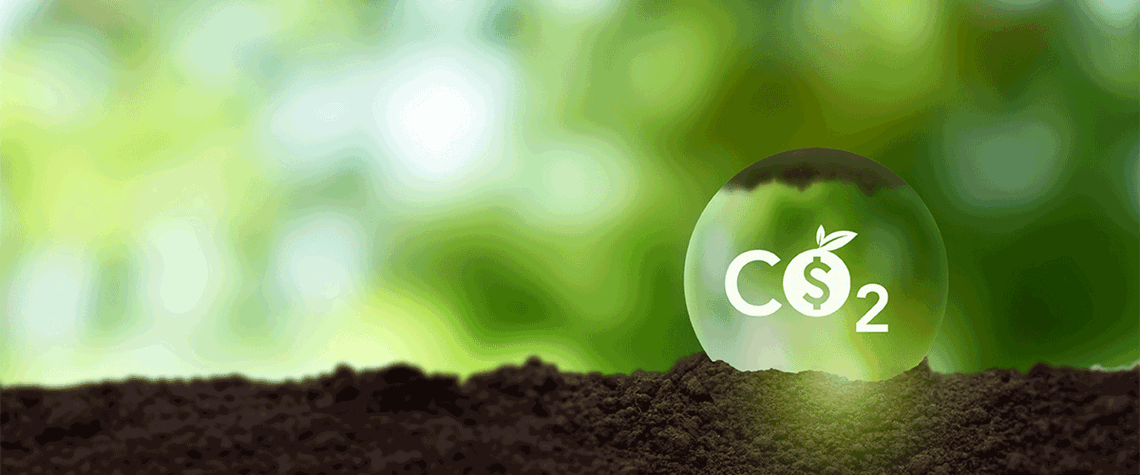High integrity rather than rapid growth will be the focus for carbon markets in 2024 after months of turbulence. The sector is also likely to become more politically charged with the proliferation of carbon pricing mechanisms potentially impacting global trade.
The voluntary carbon market (VCM) has been gripped by a credibility crisis as the efficacy of many projects and carbon credits have come under fire by the media and academia. This has led to a steep fall in liquidity and confidence in the VCM, with many buyers reducing their activity.
A host of quality and market initiatives aimed at boosting transparency and trust in carbon offsets are set to be embedded in the market, creating a new framework of standards to support the credibility of existing and future projects.
Meanwhile, the compliance carbon market has proven more resilient despite the geopolitical instability and recent economic turmoil. More and more, governments are looking towards carbon pricing to drive their climate policies and also earn much-needed revenues.
Putting a price on carbon is now an essential part of energy transition, giving a financial incentive to a country, company or any entity to reduce its emissions. But like many a new market, the road to expansion has been riddled with potholes.
VCM trials and tribulations
The $2b VCM has had its annus horribilis as the growing and intense scrutiny has caused many of its key players to reflect on its behaviour.
Verra, which is the world’s largest carbon registry, making it the largest issuer of carbon credits, has had to overhaul its methodology in a bid to improve the process and quality of its forest carbon offsets.
Similarly, South Pole, the largest trader of carbon credits, has recently ended its involvement in the Kariba REDD+ project in Zimbabwe, amid reports alleging the emissions avoided were vastly overestimated. This controversy led to the resignation of South Pole’s celebrated CEO Renat Heuberger, as the Switzerland-headquartered company looks to move forward.
A series of articles and studies in 2023 questioning the integrity of the VCM has seen the prices of carbon offsets crash, particularly those belonging to the nature-based categories.
The Platts Nature-Based Avoidance 2023 credit price was assessed at $4.50/mt of CO₂ on 9 November, according to information provider S&P Global Commodity Insights data, the lowest since the assessment began in August 2021. Prices in January were as high as $11.60/mt of CO₂.
Higher-quality offsets
The industry is to some extent banking on initiatives led by the Integrity Council for Voluntary Carbon Markets (ICVCM) and the Voluntary Carbon Markets Integrity Initiative to help define higher-quality offsets.
The steps do not represent a silver bullet for the sector, however, with participants seeing any upswing in liquidity or price as unlikely in the short term.
The situation is not helped by a small delay, with carbon offsets eligible under the Core Carbon Principles (CCP) standards from the ICVCM not expected to be available until early 2024.
The CCP includes ten codes that are broadly based under three groups: governance, emissions impact and sustainable development.
“Given timelines, we do not expect prices to experience significant changes until early 2024,” analysts at S&P Global said in a recent note. “If the market is able to respond quickly to these developments, 2024 could be a pivotal year for the VCM, with more demand, lower supply in the short term and consequently higher prices.”
The compliance markets, which include cap-and-trade schemes such as the EU’s emissions trading system (EU ETS), have had more to cheer.
Government revenues from carbon pricing mechanisms such as carbon taxes and emission trading schemes have been estimated to be as high as $100b in 2023, according to industry estimates.
These markets, however, have a long way to go to achieve majority coverage. The share of global emissions covered by carbon taxes and emissions trading systems (ETSs) was around 23% in 2022, according to the World Bank, with as many as 73 carbon taxes or ETSs in operation globally.
Meanwhile the launch of the EU’s new carbon border tax, the Carbon Border Adjustment Mechanism (CBAM), is likely to have a material impact on international trade in the coming decades.
The key objective of CBAM, whose transitional phase started on 1 October 2023, is to accelerate the energy transition and to push peers to decarbonise and adopt carbon prices. It essentially levies a tax on imports of selected carbon intensive materials and products (including aluminium, cement, electricity, fertilisers, hydrogen, iron and steel) into the EU, removing the gap between the EU ETS price and the export country of origin’s carbon price.
Coralie Laurencin, a senior director at S&P Global, said the main objective of the tax was “to level the playing field”. “Europe is serious about net zero and its energy intensive industry is under growing pressure to decarbonise in the carbon market. The CBAM should be seen in that context,” Laurencin said.
This move has heightened political and trade tensions, especially between the developed and developing world.
China and India have been leading the pushback against the EU’s CBAM, having proposed multilateral talks through the route of the World Trade Organization, looking to garner support from impacted countries.
The main purpose of the tax is to reduce the risk of carbon leakage—EU industries relocating abroad—and encourage importer nations to introduce their own carbon markets and, in doing so, limit CBAM impacts on their traded goods.
Only time will tell if this move will work, but many in the industry believe that the adoption of such carbon pricing globally is inevitable.
Eklavya Gupte is the editorial lead, EMEA energy news at S&P Global Commodity Insights.
This article was published as part of PE Outlook 2024, which is available for subscribers here. Non-subscribers can purchase a copy of the digital edition here.









Comments